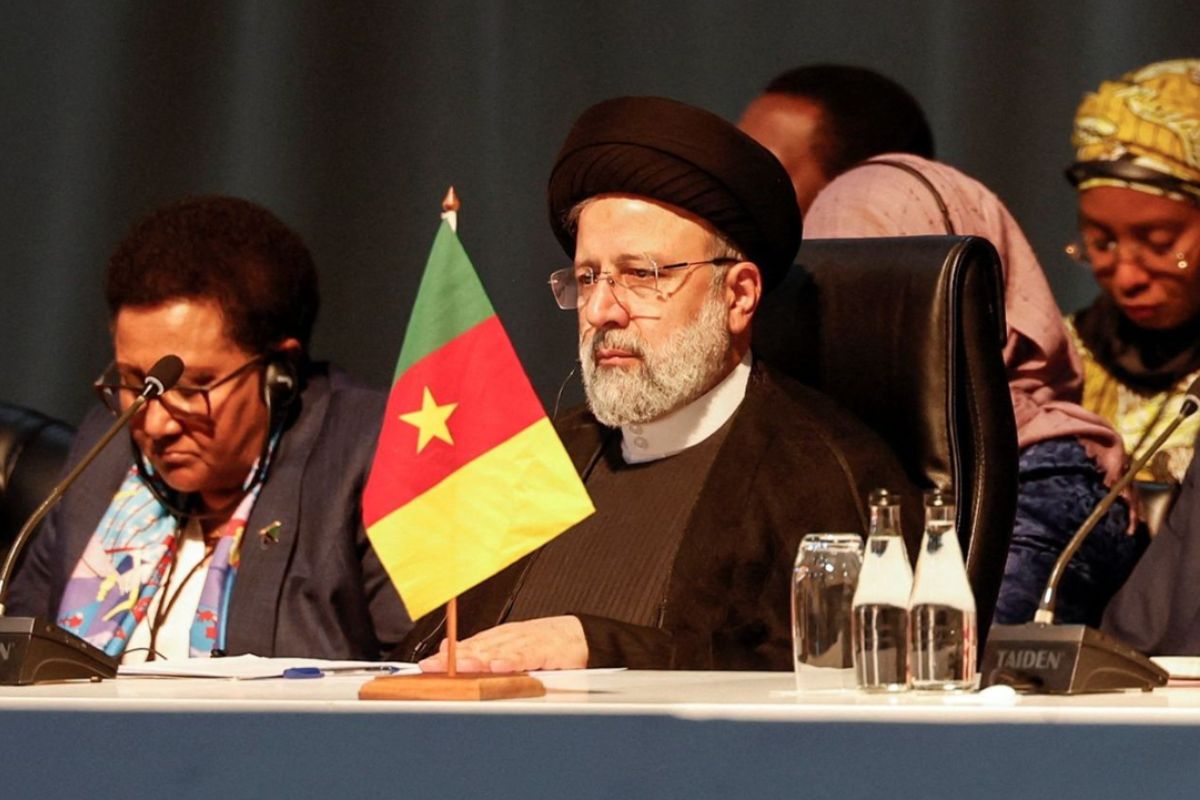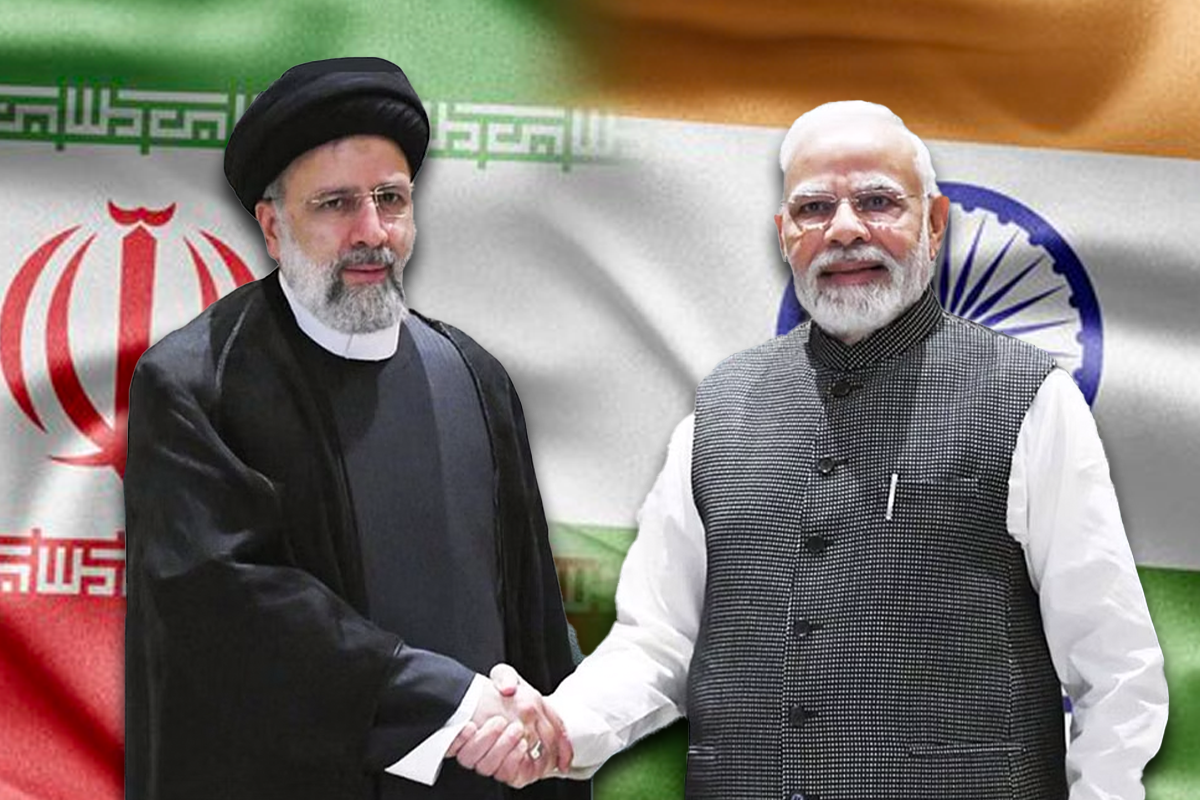NEW DELHI: The BRICS leaders have decided to extend invitations to five additional countries for membership in their alliance. South African President Cyril Ramaphosa, the host of the three-day summit in Johannesburg in August 2023, announced that Egypt, Ethiopia, Iran, Saudi Arabia, and the United Arab Emirates (UAE) have received invitations to join the BRICS. The new members are expected to officially join the alliance on January 1, 2024.
During an exclusive interview with The New Indian, Anoush Ehteshami, Iranian economic expert and Professor of International Relations at the School of Government and International Affairs, Durham University, emphasised the geopolitical repercussions of the BRICS expansion and how Iran and India’s relations could strengthen as a result of it. He also underscored the importance of de-dollarisation and discussed the BRICS’ potential to assume the economic hegemony currently held by the G7. Furthermore, Ehteshami delved into historical regional differences in the Middle East, Pakistan’s BRICS aspirations, and Iran’s “indirect” involvement in the Israel-Hamas conflict.
“Iran-India Are Bedfellows”

Iran and India’s relations are strengthening as a result of the BRICS alliance’s expansion. India values Iran as a crucial partner because of its geographical proximity to Central Asia and its shared borders with Afghanistan and Pakistan. Additionally, Iran maintains substantial political and economic collaboration with all five members of the BRICS.
Shedding light on how Iran’s entry into BRICS might influence its diplomatic relations with India, Ehteshami said, “India and Iran are bedfellows. They have a long history together. They understand their cultural nuances. In India, when you talk about the Parsis, there is a direct link to Iran. When you talk about the Mughals, there is a direct link to Iran. Also, when they both look northwards and across the borders at each other, India and Iran share a long history of Central Asia, literature, cuisine, cultural values, and so on.
Also Read: 3 months in: Is there a clear winner in Israel-Hamas war yet?
“Therefore, in that regard, I think Iran’s membership of the BRICS will open new avenues for conversation between New Delhi and Tehran. The strategic importance of Chabahar in southern Iran gives India access to Central Asia and Afghanistan, while Pakistan denies India that access.
“Both nations have common interests in the security of the Indian Ocean, trade routes, and cultural and economic ties with countries like the UAE, Saudi Arabia, and Oman. India needs to look at West Asia as a destination as well as a pathway for the broadening of its international profile. The BRICS+ may well offer India that opportunity.”
“BRICS Is Godsend For Iran”

The inclusion of Iran in BRICS serves as a political achievement for the Raisi administration. Iran’s prosperity doesn’t solely depend on nuclear diplomacy but involves expanding connections with Asia and the region. Underscoring the economic motivations and geopolitical objectives that drive Iran’s eagerness to join the BRICS, Ehteshami said, “I think one of the key drivers of this is Iran’s desperate need to try and reintegrate in a global economy in some form or another, because the American sanctions, which have now been going on for 40 years or more in one form or another, have been crippling Iran’s economy.
“Iran’s economy, despite its substantial size, demographics, geography, and mineral resources, is underperforming and faces challenges, particularly due to strong sanctions on its primary export, crude oil. The imperative for Iran is to re-enter the global economy independently of G7 or US control. The BRICS membership offers Iran an opportunity in this regard.
“Additionally, aligning with BRICS resonates with Iran’s ideological belief in a post-Western world order. Being part of the BRICS and the Shanghai Cooperation Organisation (SCO) allows Iran to feel more integrated into the emerging global order, providing a chance to play a more influential role.
Also Read: Are BRICS nations eyeing common currency in 2024?
Highlighting the “junk status” of Iran’s currency, due to sanctions, as a significant issue, he stated that the prospect of trade through local currencies within BRICS is seen as a beneficial economic platform. This would free Iran from the constraint of converting its “worthless” currency into US dollars for trading with major partners like China, India, and Russia, presenting a win-win strategy for Iran in the evolving global economic landscape.
“Within the BRICS, if there is talk of creating trade through local currencies, that is a godsend for Iran because it means that it doesn’t have to convert its worthless currency into US dollars to do its trading with what are now its major trading partners, China, India, Russia. So, the BRICS provides Iran with a whole new economic platform,” he explained.
“India Is West’s Favourite Asian Country”

Many analysts view BRICS as an effort to establish a new global order, particularly focusing on the interests of the Global South. China has actively pursued an alternative global narrative, criticising US sanctions and its perceived overreach, while concurrently promoting the expansive “Belt and Road” infrastructure initiative aimed at developing nations.
India, on the other hand, has aimed for a neutral stance, presenting itself to the West as a counterbalance to Chinese military expansion within the “Quad” grouping, while also maintaining trade relationships with Russia and refraining from condemning the Ukraine invasion.
Discussing the diverging interests of BRICS members, especially between China and India, Ehteshami stated, “India is the favourite Asian country of the West, alongside Japan and South Korea. Unlike Japan and South Korea, India possesses substantial geographic, demographic, and emerging economic influence. Its strategic location at the crossroads of oceans facilitates maritime trade across Eurasia, making it a profoundly important nation. India’s cultural influence extends from the southern tip of Africa to Southeast Asia and up to Central Asia, reaching the borders of Russia.”
However, he also noted that despite the vision of a multipolar world order, achieving cohesion among BRICS members remains a distant prospect, with differences needing to be set aside for a common good.
Also Read: Argentina chooses US Dollar over BRICS membership
He expounded, “Both India and China face substantial challenges, including a border dispute that hinders collaborative efforts for the security of Asia, where both nations hold dominant positions. Moreover, in certain aspects, India’s diverse and multifaceted nature poses challenges for its ability to compete with China. China’s persistent pursuit of a single agenda is something that India finds challenging to replicate due to its multicultural, multi-economic, and multi-political path, characterised by its dynamic nature.
“So, these are structural problems that the BRICS face. In my view, the BRICS may struggle to tackle these issues while simultaneously pursuing expansion and the establishment of a multipolar world order. It’s crucial to note that a multipolar world order doesn’t necessarily require complete cohesion among India, Russia, and China. Rather, it entails a shared interest. However, achieving this goal seems distant at present.”











